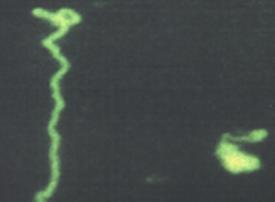Other Tick-Borne Diseases

Besides the diseases described above, ticks in different geographic areas may be infected with one or more of the following: Colorado tick fever virus; Mycoplasmas; Powassan encephalitis virus; Q Fever; Rocky Mountain spotted fever (Rickettsia); tickborne relapsing fever Borrelia; Tularemia (bacteria).
The Tick Chart tells where these diseases are found.
It is certain that we have not yet identified all the diseases that ticks carry and transmit. Coinfections complicate diagnosis and treatment and make recovery even more difficult. Doctors may suspect coinfections in patients who do not respond satisfactorily to antibiotics prescribed for Lyme disease.
There are other possible explanations for treatment failures. People with chronic tickborne infections often have a weakened immune response. This allows other opportunistic infections to flourish, such as HHV-6, CMV, and EBV. These diseases are not necessarily carried by ticks but are widespread in the environment. PCR rather than antibody tests should be used to diagnose these infections. Some people may also have exposure to toxic metals. Specialists should evaluate these cases.
Colorado Tick Fever
Colorado tick fever is caused by a virus carried by Rocky Mountain wood ticks. Symptoms are acute high fever, severe headache, chills, fatigue, and muscle pain.
Mycoplasma
Mycoplasma species have been identified in ticks. Smaller than bacteria, they invade human cells and disrupt the immune system, causing fatigue, musculoskeletal symptoms, and cognitive problems. Mycoplasmas can be treated with antibiotics.
Powassan virus
Powassan virus causes tick-borne encephalitis (TBE). Symptoms may include fever, convulsions, headache, disorientation, lethargy, partial coma and paralysis. Ten percent of patients die and survivors may have permanent damage.
Q Fever
Q fever is caused by Coxiella burnetii, a kind of bacteria carried by cattle, sheep, and goats. Symptoms are similar to those of Lyme disease. Q fever is likely to start with a high fever. Pneumonia and abnormal liver function also suggest Q fever. Doxycycline is the treatment of choice.
Rocky Mountain Spotted Fever
Rocky Mountain spotted fever is caused by bacteria called Rickettsia rickettsii that are transmitted by the bite of a tick. Patients develop high fever, rash, headache and bleeding problems. Thirty percent of untreated patients die. It is treatable with antibiotics, often doxycycline.
Tick Paralysis
Certain ticks secrete a toxin that causes a progressive paralysis, which is reversed when the tick is removed.
Tickborne Relapsing Fever
The agent of tickborne relapsing fever, Borrelia hermsi, is carried by soft ticks of the western United States. It is characterized by cycles of high fever and is treated with antibiotics.
Tularemia
Tularemia, or rabbit fever, occurs throughout the United States. It is caused by the bacterium Francisella tularensis. Symptoms may include skin ulcers, swollen and painful lymph glands, inflamed eyes, sore throat, mouth sores, pneumonia, diarrhea and vomiting. The most effective treatment is with fluorinated quinolones.




















I was diagnosed with Ehrlichiosis a few months ago and was very sick with fever, cough, vomiting and intense pain and light sensitivity .I was told that it was a tick born illness. What type of tick causes this? I was treated with Doxycycline for 2 weeks
Filariasis should be added to this list, along with causes, signs, symptoms and education awareness.